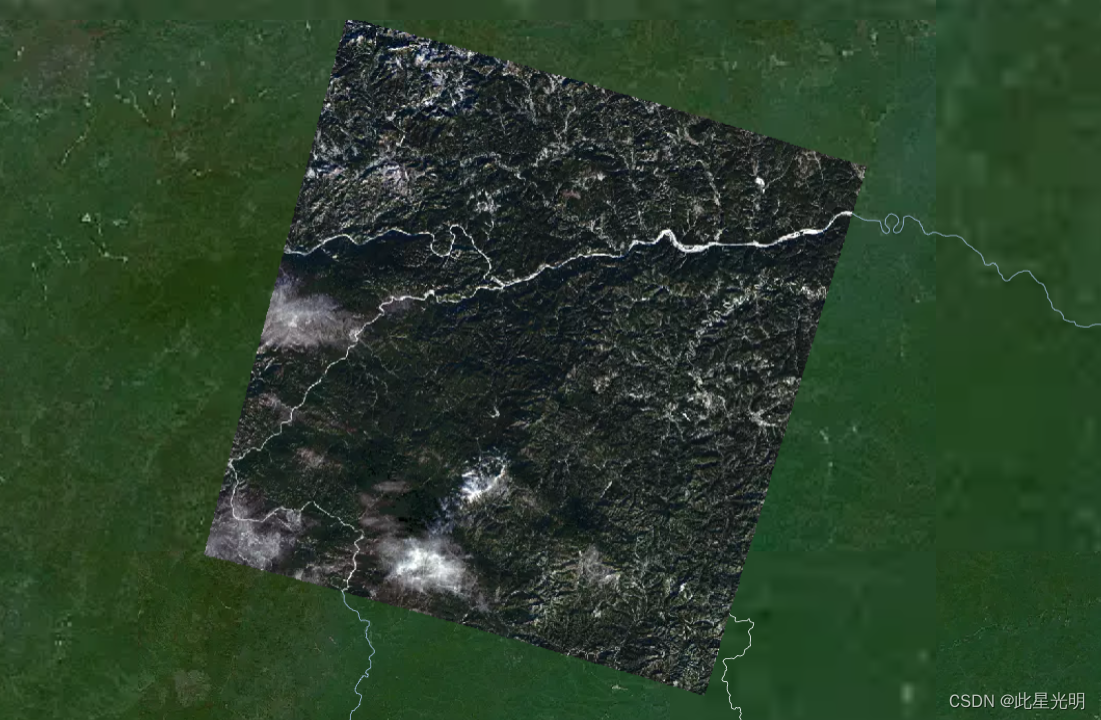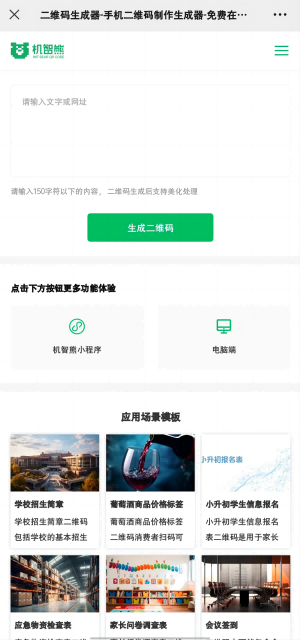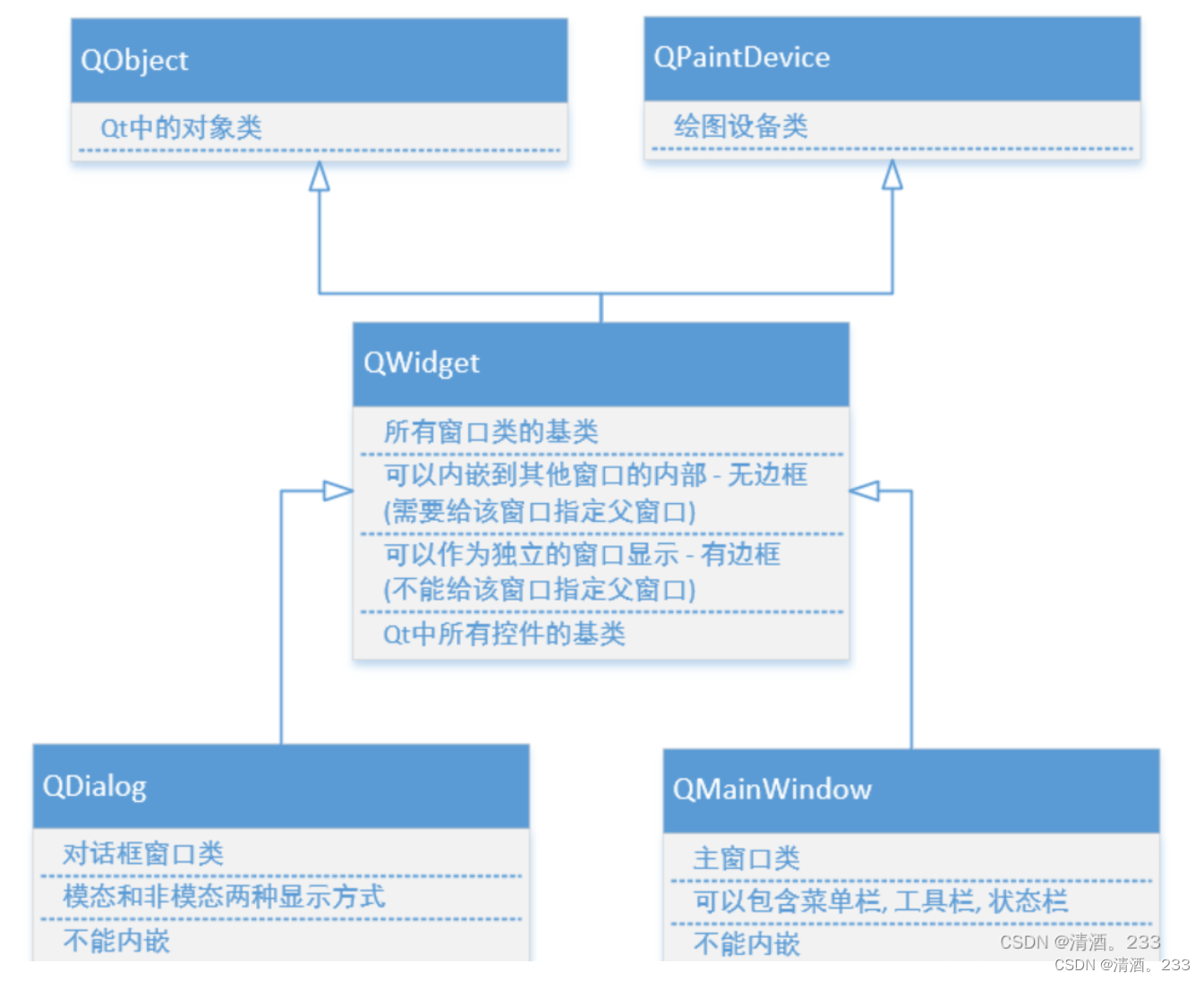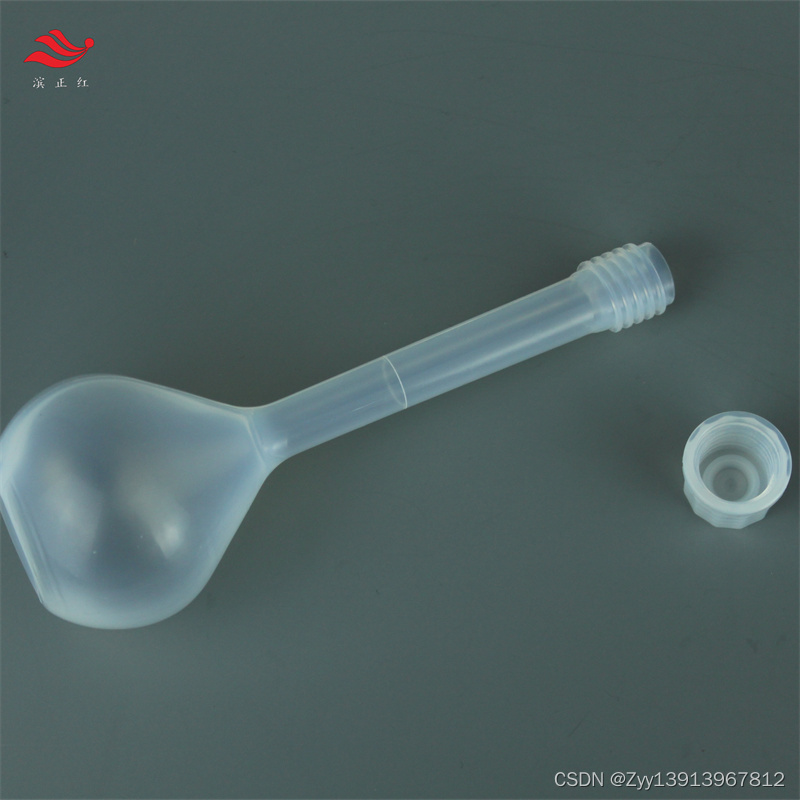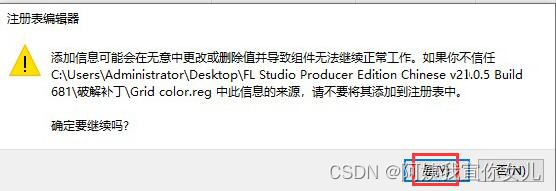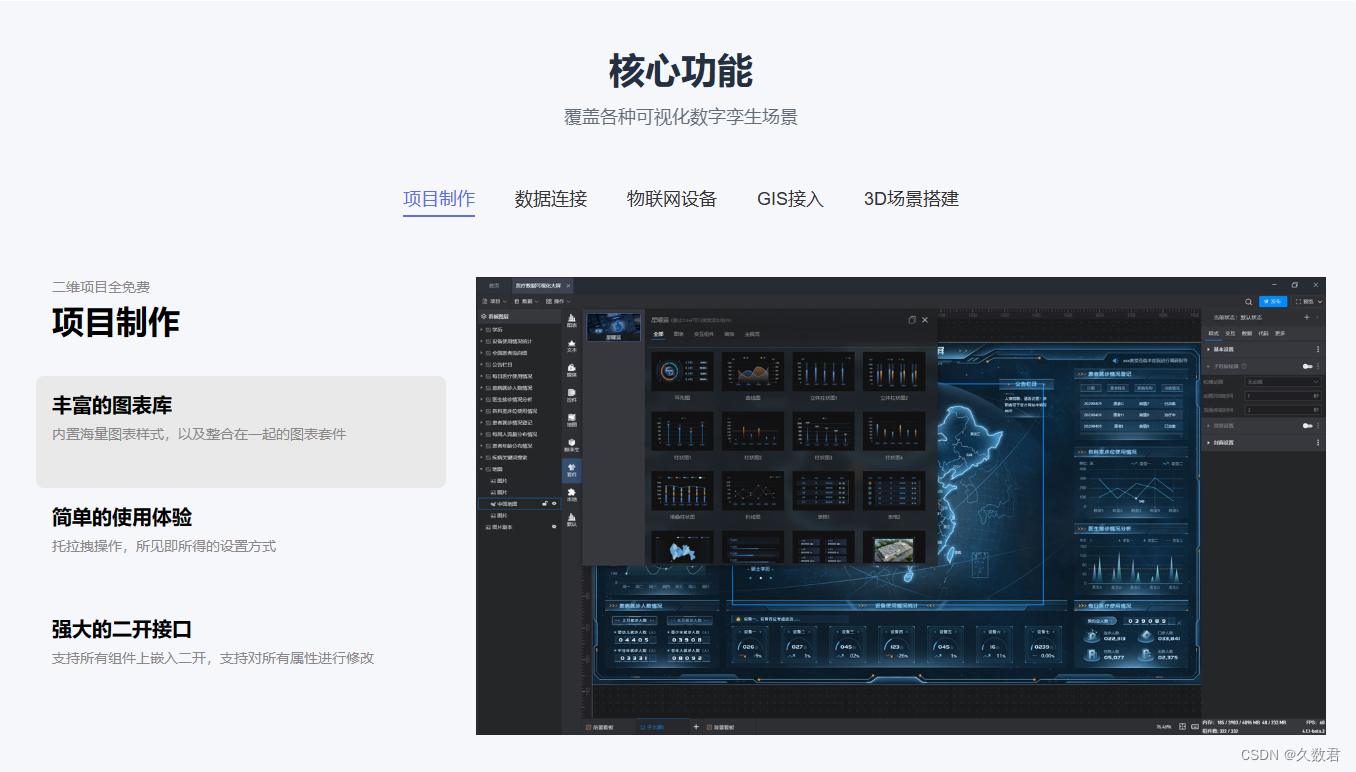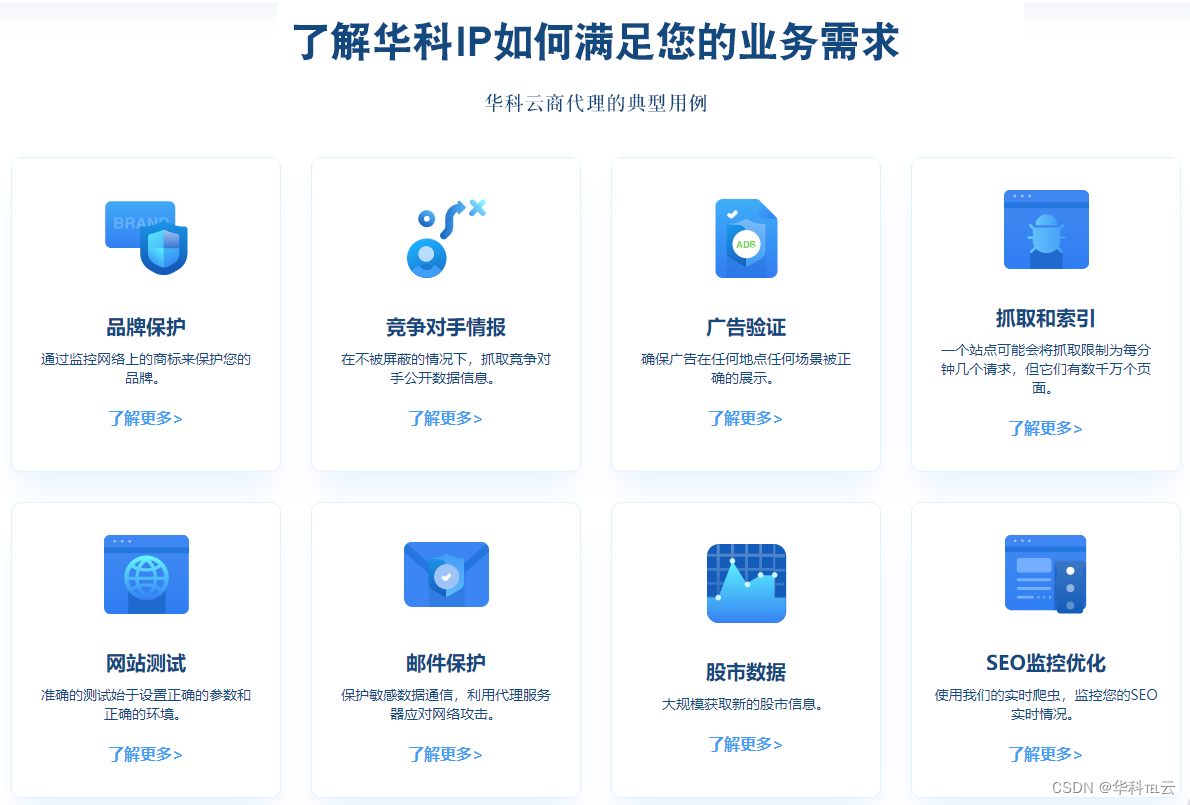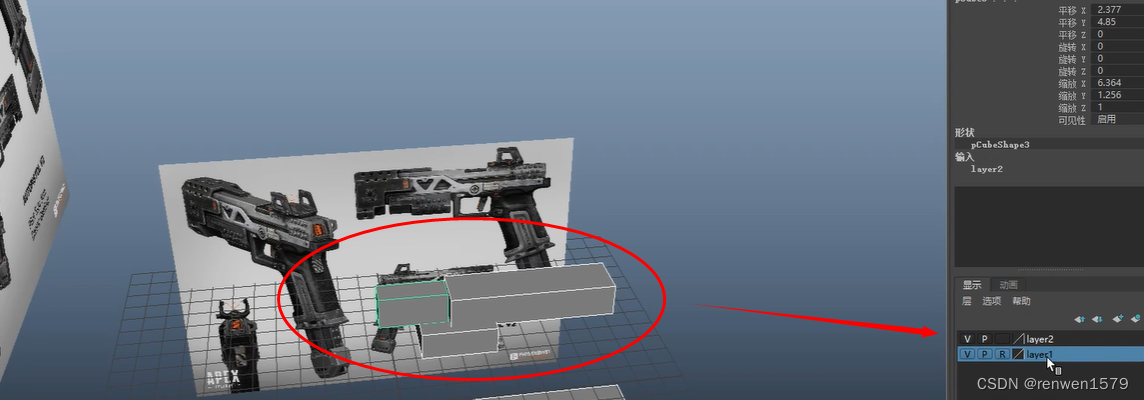神经网络学习小记录77——深入浅出Self-Attention自注意力机制与Transformer模块
- 学习前言
- 代码下载
- Self-Attention自注意力机制详解
- 一、Self-attention结构解析
- 二、Self-attention的矩阵运算
- 三、Multi-Head多头注意力机制
- TransformerBlock的构建
- 一、视觉部分的TransformerBlock(VisionTransformer)
- 1、自注意力机制
- 2、TransformerBlock
- 二、文本部分的TransformerBlock(Bert encoder)
- 1、自注意力机制
- 2、TransformerBlock
- 三、文本部分的TransformerBlock(Transformer Decoder)
- 1、自注意力机制
- 2、TransformerBlock
学习前言
Self-Attention自注意力机制是Transformer模块的重要组成部分,是截至到现在(2024年1月6日)大大小小网络的标配,无论是LLM还是StableDiffusion,内部都有Self-Attention与Transformer,因此,一起来学学哈哈。

代码下载
Github源码下载地址为:
https://github.com/bubbliiiing/blip-pytorch
复制该路径到地址栏跳转。
Self-Attention自注意力机制详解
一、Self-attention结构解析
看懂Self-attention结构,其实看懂下面这一系列图就可以了,首先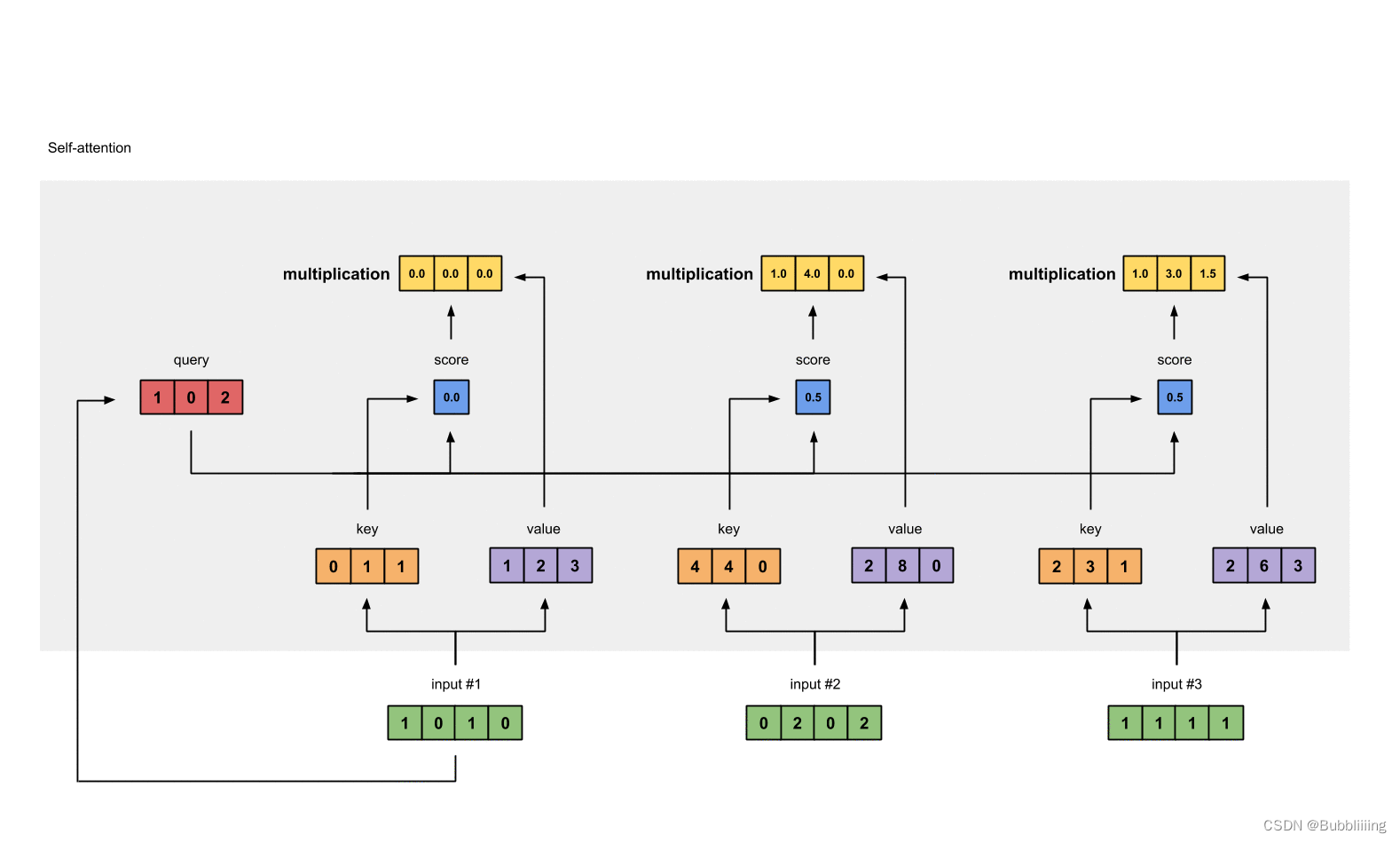
存在一个序列的三个单位的输入,

每一个序列单位的输入都可以通过三个处理(比如全连接)获得Query、Key、Value,Query是查询向量、Key是键向量、Value值向量。
如果我们想要获得input-1的输出,那么我们进行如下几步:
1、利用input-1的查询向量,分别乘上input-1、input-2、input-3的键向量,此时我们获得了三个score。
2、然后对这三个score取softmax,获得了input-1、input-2、input-3各自的重要程度。
3、然后将这个重要程度乘上input-1、input-2、input-3的值向量,求和。
4、此时我们获得了input-1的输出。
如图所示,我们进行如下几步:
1、input-1的查询向量为[1, 0, 2],分别乘上input-1、input-2、input-3的键向量,获得三个score为2,4,4。
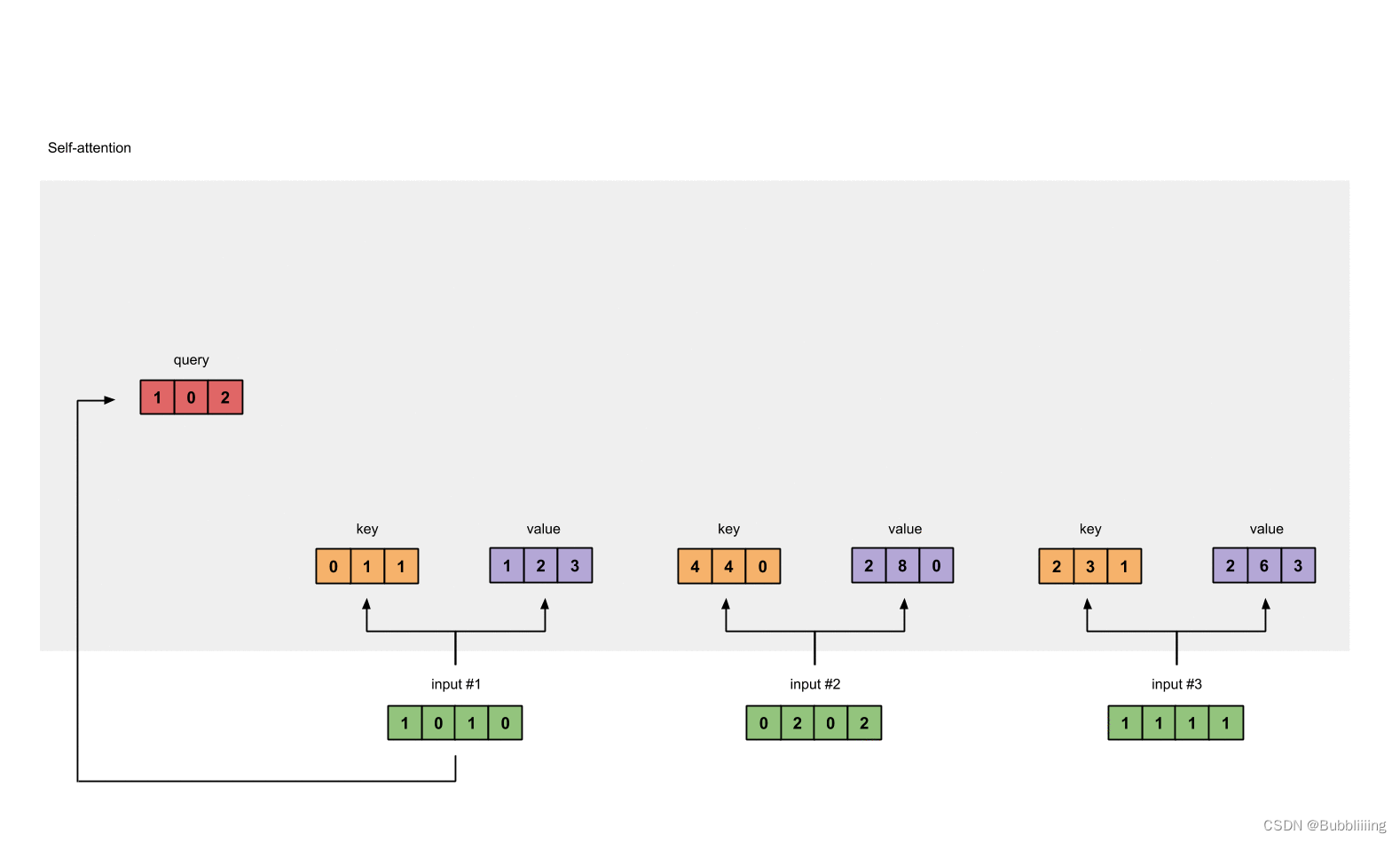
2、然后对这三个score取softmax,获得了input-1、input-2、input-3各自的重要程度,获得三个重要程度为0.0,0.5,0.5。
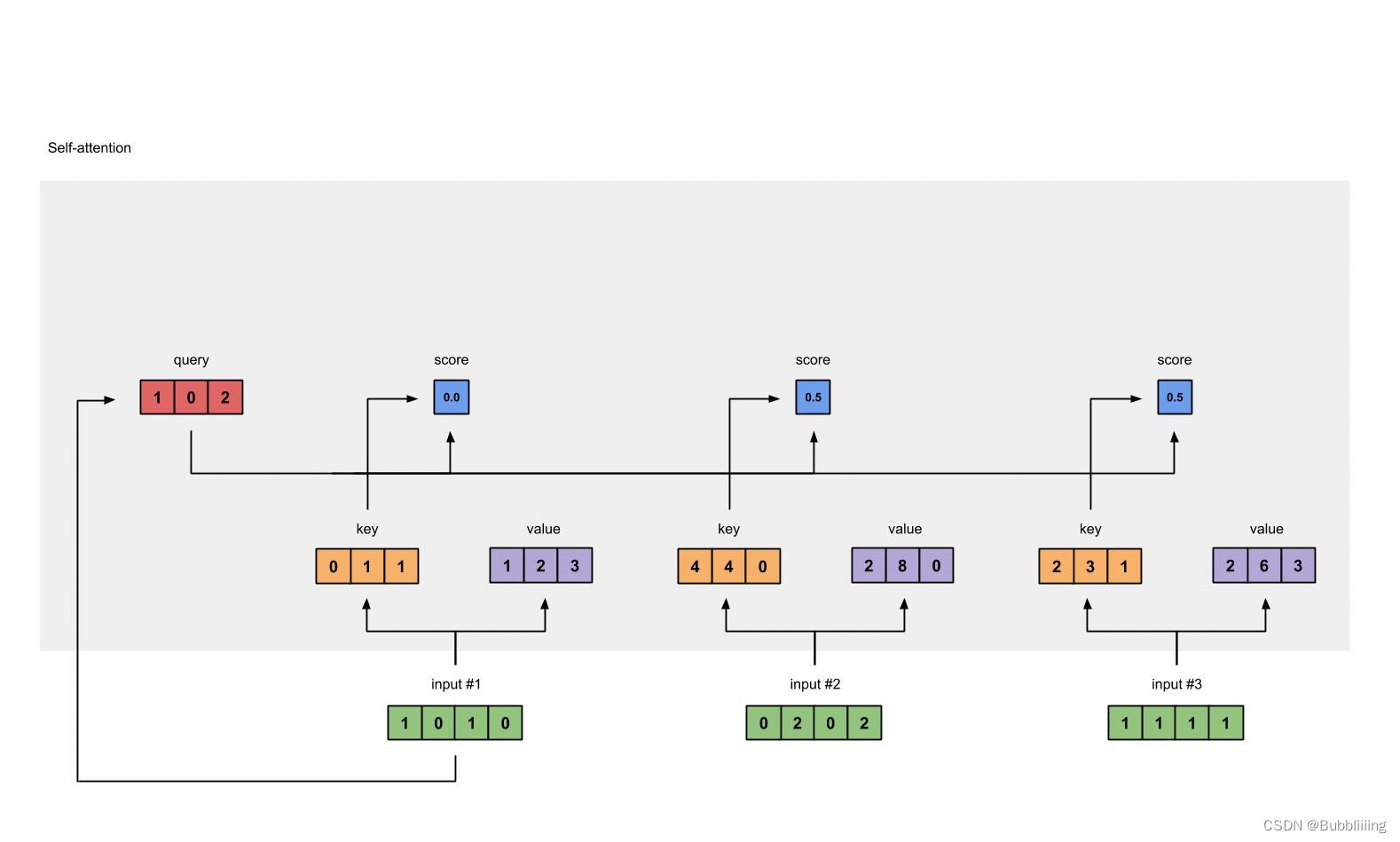
3、然后将这个重要程度乘上input-1、input-2、input-3的值向量,求和,即
0.0
∗
[
1
,
2
,
3
]
+
0.5
∗
[
2
,
8
,
0
]
+
0.5
∗
[
2
,
6
,
3
]
=
[
2.0
,
7.0
,
1.5
]
0.0 * [1, 2, 3] + 0.5 * [2, 8, 0] + 0.5 * [2, 6, 3] = [2.0, 7.0, 1.5]
0.0∗[1,2,3]+0.5∗[2,8,0]+0.5∗[2,6,3]=[2.0,7.0,1.5]。
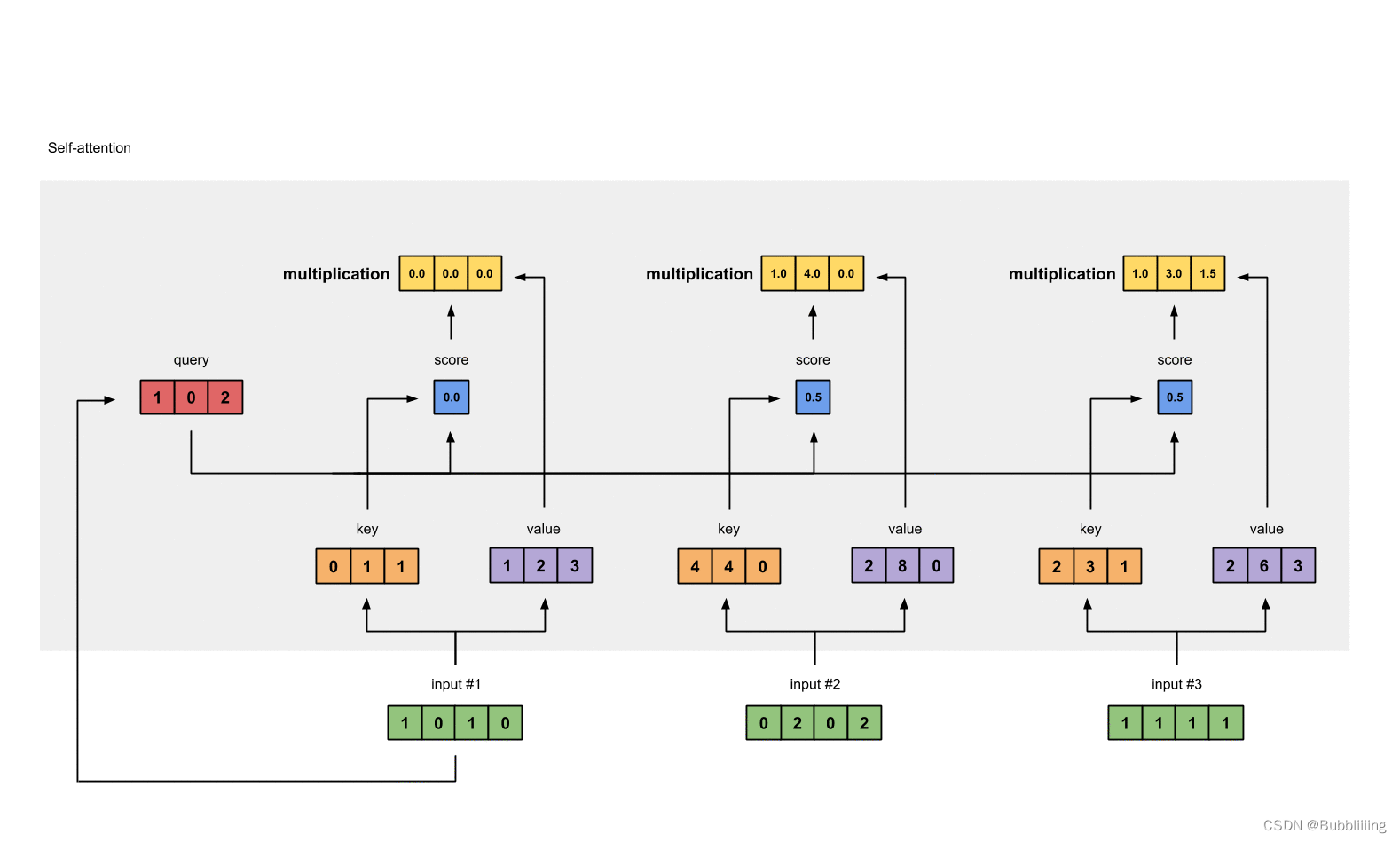
4、此时我们获得了input-1的输出 [2.0, 7.0, 1.5]。

上述的例子中,序列长度仅为3,在实际使用时,序列长度远不仅仅为3,但计算过程是一样的。在实际运算时,我们采用矩阵进行运算。
二、Self-attention的矩阵运算
实际的矩阵运算过程如下图所示。我以实际矩阵为例子给大家解析:
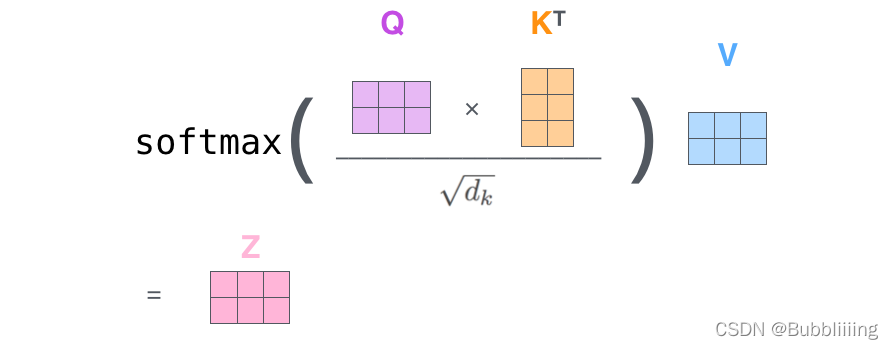
输入的Query、Key、Value如下图所示:

首先利用 查询向量query 叉乘 转置后的键向量key,这一步可以通俗的理解为,利用查询向量去查询序列的特征,获得序列每个部分的重要程度score。
输出的每一行,都代表input-1、input-2、input-3,对当前input的贡献,我们对这个贡献值取一个softmax。


然后利用 score 叉乘 value,这一步可以通俗的理解为,将序列每个部分的重要程度重新施加到序列的值上去。

这个矩阵运算的代码如下所示,各位同学可以自己试试。
import numpy as np
def soft_max(z):
t = np.exp(z)
a = np.exp(z) / np.expand_dims(np.sum(t, axis=1), 1)
return a
Query = np.array([
[1,0,2],
[2,2,2],
[2,1,3]
])
Key = np.array([
[0,1,1],
[4,4,0],
[2,3,1]
])
Value = np.array([
[1,2,3],
[2,8,0],
[2,6,3]
])
scores = Query @ Key.T
print(scores)
scores = soft_max(scores)
print(scores)
out = scores @ Value
print(out)
三、Multi-Head多头注意力机制
多头注意力机制的示意图如图所示:

这幅图给人的感觉略显迷茫,我们跳脱出这个图,直接从矩阵的shape入手会清晰很多。
假设我们现在有一个特征序列的shape为[3, 768],也就意味着序列长度为3,每一个单位序列的特征大小为768。
在施加多头的时候,我们直接对[3, 768]的最后一维度进行分割,比如我们想分割成12个头,那么矩阵的shepe就变成了[3, 12, 64]。
然后我们将[3, 12, 64]进行转置,将12放到前面去,获得的特征层为[12, 3, 64]。之后我们忽略这个12,把它和batch维度同等对待,只对3, 64进行处理,其实也就是上面的注意力机制的过程了。
下列代码是VisionTransformer的Attention注意力机制。
import numpy as np
def soft_max(z):
t = np.exp(z)
a = np.exp(z) / np.expand_dims(np.sum(t, axis=-1), -1)
return a
values_length = 3
num_attention_heads = 8
hidden_size = 768
attention_head_size = hidden_size // num_attention_heads
Query = np.random.rand(values_length, hidden_size)
Key = np.random.rand(values_length, hidden_size)
Value = np.random.rand(values_length, hidden_size)
Query = np.reshape(Query, [values_length, num_attention_heads, attention_head_size])
Key = np.reshape(Key, [values_length, num_attention_heads, attention_head_size])
Value = np.reshape(Value, [values_length, num_attention_heads, attention_head_size])
Query = np.transpose(Query, [1, 0, 2])
Key = np.transpose(Key, [1, 0, 2])
Value = np.transpose(Value, [1, 0, 2])
scores = Query @ np.transpose(Key, [0, 2, 1])
print(np.shape(scores))
scores = soft_max(scores)
print(np.shape(scores))
out = scores @ Value
print(np.shape(out))
out = np.transpose(out, [1, 0, 2])
print(np.shape(out))
out = np.reshape(out, [values_length , 768])
print(np.shape(out))
TransformerBlock的构建
一、视觉部分的TransformerBlock(VisionTransformer)
1、自注意力机制
VisionTransformer中的自注意力机制与上文的构建方法一样,是最简单的,由于一张图片划分区域后,Attention的长度固定,无需考虑遮罩,是一个比较简单干净的代码。
将输入的特征qkv特征进行划分,首先生成query, key, value。query是查询向量、key是键向量、v是值向量。
然后利用 查询向量query 叉乘 转置后的键向量key,这一步可以通俗的理解为,利用查询向量去查询序列的特征,获得序列每个部分的重要程度score。
然后利用 score 叉乘 value,这一步可以通俗的理解为,将序列每个部分的重要程度重新施加到序列的值上去。
class Attention(nn.Module):
def __init__(self, dim, num_heads=8, qkv_bias=False, attn_drop=0., proj_drop=0.):
super().__init__()
self.num_heads = num_heads
self.scale = (dim // num_heads) ** -0.5
self.qkv = nn.Linear(dim, dim * 3, bias=qkv_bias)
self.attn_drop = nn.Dropout(attn_drop)
self.proj = nn.Linear(dim, dim)
self.proj_drop = nn.Dropout(proj_drop)
def forward(self, x):
B, N, C = x.shape
qkv = self.qkv(x).reshape(B, N, 3, self.num_heads, C // self.num_heads).permute(2, 0, 3, 1, 4)
q, k, v = qkv[0], qkv[1], qkv[2]
attn = (q @ k.transpose(-2, -1)) * self.scale
attn = attn.softmax(dim=-1)
attn = self.attn_drop(attn)
x = (attn @ v).transpose(1, 2).reshape(B, N, C)
x = self.proj(x)
x = self.proj_drop(x)
return x
2、TransformerBlock
我们可以参考下图,通过上述提到的自注意力机制模块构建TransformerBlock。

在完成SelfAttention的构建后,我们需要在其后加上两个全连接。就构建了TransformerBlock。
class Mlp(nn.Module):
""" MLP as used in Vision Transformer, MLP-Mixer and related networks
"""
def __init__(self, in_features, hidden_features=None, out_features=None, act_layer=GELU, drop=0.):
super().__init__()
out_features = out_features or in_features
hidden_features = hidden_features or in_features
drop_probs = (drop, drop)
self.fc1 = nn.Linear(in_features, hidden_features)
self.act = act_layer()
self.drop1 = nn.Dropout(drop_probs[0])
self.fc2 = nn.Linear(hidden_features, out_features)
self.drop2 = nn.Dropout(drop_probs[1])
def forward(self, x):
x = self.fc1(x)
x = self.act(x)
x = self.drop1(x)
x = self.fc2(x)
x = self.drop2(x)
return x
class Block(nn.Module):
def __init__(self, dim, num_heads, mlp_ratio=4., qkv_bias=False, drop=0., attn_drop=0.,
drop_path=0., act_layer=GELU, norm_layer=nn.LayerNorm):
super().__init__()
self.norm1 = norm_layer(dim)
self.attn = Attention(dim, num_heads=num_heads, qkv_bias=qkv_bias, attn_drop=attn_drop, proj_drop=drop)
self.norm2 = norm_layer(dim)
self.mlp = Mlp(in_features=dim, hidden_features=int(dim * mlp_ratio), act_layer=act_layer, drop=drop)
self.drop_path = DropPath(drop_path) if drop_path > 0. else nn.Identity()
def forward(self, x):
x = x + self.drop_path(self.attn(self.norm1(x)))
x = x + self.drop_path(self.mlp(self.norm2(x)))
return x
二、文本部分的TransformerBlock(Bert encoder)
1、自注意力机制
Bert中的TransformerBlock取自Transformer论文的Encoder部分,相比于VisionTransformer,Bert中的TransformerBlock会稍微复杂一些,因为我们需要考虑输入并非定长的,有些部分的特征要被屏蔽掉,此时Bert的Encoder需要传入一个mask,代表哪些特征要被屏蔽。
为了减少未来同学们的学习成本,我复现的代码来自于huggingface的transfomers库,该库实现的代码非常规范,且很多仓库都基于该代码进行修改,工作中也有很多公司基于此代码开发,未来的学习成本会更低。
从Multi-Head多头注意力机制分析可以知道,在多头注意力机制施加时,scores矩阵加上bs的shape为[bs, num_attention_heads, values_length, values_length],最后一维度的values_length代表的就是每个value的重要程度。
因此,如果要使得某些value无用,那么就只需要构建一个shape为[bs, values_length]的矩阵,在最后一维度的values_length中,将需要忽略的值设置为-10000即可,此时计算softmax时近乎为0,即某个value的重要程度为0。
该矩阵在中间运算时拓展维度成为[bs, 1, 1, values_length],与scores相加,会自动进行矩阵广播。
class BertSelfAttention(nn.Module):
def __init__(self, config, is_cross_attention):
super().__init__()
self.config = config
if config.hidden_size % config.num_attention_heads != 0 and not hasattr(config, "embedding_size"):
raise ValueError(
"The hidden size (%d) is not a multiple of the number of attention "
"heads (%d)" % (config.hidden_size, config.num_attention_heads)
)
self.num_attention_heads = config.num_attention_heads
self.attention_head_size = int(config.hidden_size / config.num_attention_heads)
self.all_head_size = self.num_attention_heads * self.attention_head_size
self.query = nn.Linear(config.hidden_size, self.all_head_size)
if is_cross_attention:
self.key = nn.Linear(config.encoder_width, self.all_head_size)
self.value = nn.Linear(config.encoder_width, self.all_head_size)
else:
self.key = nn.Linear(config.hidden_size, self.all_head_size)
self.value = nn.Linear(config.hidden_size, self.all_head_size)
self.dropout = nn.Dropout(config.attention_probs_dropout_prob)
self.position_embedding_type = getattr(config, "position_embedding_type", "absolute")
if self.position_embedding_type == "relative_key" or self.position_embedding_type == "relative_key_query":
self.max_position_embeddings = config.max_position_embeddings
self.distance_embedding = nn.Embedding(2 * config.max_position_embeddings - 1, self.attention_head_size)
self.save_attention = False
def save_attn_gradients(self, attn_gradients):
self.attn_gradients = attn_gradients
def get_attn_gradients(self):
return self.attn_gradients
def save_attention_map(self, attention_map):
self.attention_map = attention_map
def get_attention_map(self):
return self.attention_map
def transpose_for_scores(self, x):
new_x_shape = x.size()[:-1] + (self.num_attention_heads, self.attention_head_size)
x = x.view(*new_x_shape)
return x.permute(0, 2, 1, 3)
def forward(
self,
hidden_states,
attention_mask=None,
head_mask=None,
encoder_hidden_states=None,
encoder_attention_mask=None,
past_key_value=None,
output_attentions=False,
):
# query特征来自于本Blocks的hidden_states
mixed_query_layer = self.query(hidden_states)
# 如果我们使用了来自于其它Blocks的特征进行特征融合(Transformer Decoder中常用)
# key和value来自于其它Blocks的特征
is_cross_attention = encoder_hidden_states is not None
# 根据输入的特征情况选择对不同的特征进行处理
# 如果使用了来自于其它Blocks的特征进行特征融合
if is_cross_attention:
key_layer = self.transpose_for_scores(self.key(encoder_hidden_states))
value_layer = self.transpose_for_scores(self.value(encoder_hidden_states))
attention_mask = encoder_attention_mask
elif past_key_value is not None:
key_layer = self.transpose_for_scores(self.key(hidden_states))
value_layer = self.transpose_for_scores(self.value(hidden_states))
key_layer = torch.cat([past_key_value[0], key_layer], dim=2)
value_layer = torch.cat([past_key_value[1], value_layer], dim=2)
else:
key_layer = self.transpose_for_scores(self.key(hidden_states))
value_layer = self.transpose_for_scores(self.value(hidden_states))
query_layer = self.transpose_for_scores(mixed_query_layer)
# 保留past_key_value
past_key_value = (key_layer, value_layer)
# query x key
# bs, num_attention_heads, values_length, attention_head_size (query_layer)
# x bs, num_attention_heads, attention_head_size, values_length (key_layer.transpose(-1, -2))
# => bs, num_attention_heads, values_length, values_length (attention_scores)
attention_scores = torch.matmul(query_layer, key_layer.transpose(-1, -2))
if self.position_embedding_type == "relative_key" or self.position_embedding_type == "relative_key_query":
seq_length = hidden_states.size()[1]
position_ids_l = torch.arange(seq_length, dtype=torch.long, device=hidden_states.device).view(-1, 1)
position_ids_r = torch.arange(seq_length, dtype=torch.long, device=hidden_states.device).view(1, -1)
distance = position_ids_l - position_ids_r
positional_embedding = self.distance_embedding(distance + self.max_position_embeddings - 1)
positional_embedding = positional_embedding.to(dtype=query_layer.dtype) # fp16 compatibility
if self.position_embedding_type == "relative_key":
relative_position_scores = torch.einsum("bhld,lrd->bhlr", query_layer, positional_embedding)
attention_scores = attention_scores + relative_position_scores
elif self.position_embedding_type == "relative_key_query":
relative_position_scores_query = torch.einsum("bhld,lrd->bhlr", query_layer, positional_embedding)
relative_position_scores_key = torch.einsum("bhrd,lrd->bhlr", key_layer, positional_embedding)
attention_scores = attention_scores + relative_position_scores_query + relative_position_scores_key
# 除以head size
attention_scores = attention_scores / math.sqrt(self.attention_head_size)
if attention_mask is not None:
# 将得分加上mask,需要忽略的mask是-10000,此时attention_scores会很低,计算softmax时近乎为0
# Apply the attention mask is (precomputed for all layers in BertModel forward() function)
attention_scores = attention_scores + attention_mask
# 根据得分计算比率
# Normalize the attention scores to probabilities.
attention_probs = nn.Softmax(dim=-1)(attention_scores)
if is_cross_attention and self.save_attention:
self.save_attention_map(attention_probs)
attention_probs.register_hook(self.save_attn_gradients)
# 增加了dropout
# This is actually dropping out entire tokens to attend to, which might
# seem a bit unusual, but is taken from the original Transformer paper.
attention_probs_dropped = self.dropout(attention_probs)
# Mask heads if we want to
if head_mask is not None:
attention_probs_dropped = attention_probs_dropped * head_mask
# 根据得分叉乘上value矩阵,获得结果
# bs, num_attention_heads, values_length, values_length (attention_probs_dropped)
# x bs, num_attention_heads, values_length, attention_head_size (value_layer)
# => bs, num_attention_heads, values_length, attention_head_size (context_layer)
context_layer = torch.matmul(attention_probs_dropped, value_layer)
# bs, num_attention_heads, values_length, attention_head_size (context_layer)
# => bs, values_length, num_attention_heads, attention_head_size
# => bs, values_length, hidden_size (context_layer)
context_layer = context_layer.permute(0, 2, 1, 3).contiguous()
new_context_layer_shape = context_layer.size()[:-2] + (self.all_head_size,)
context_layer = context_layer.view(*new_context_layer_shape)
outputs = (context_layer, attention_probs) if output_attentions else (context_layer,)
outputs = outputs + (past_key_value,)
return outputs
class BertSelfOutput(nn.Module):
def __init__(self, config):
super().__init__()
self.dense = nn.Linear(config.hidden_size, config.hidden_size)
self.LayerNorm = nn.LayerNorm(config.hidden_size, eps=config.layer_norm_eps)
self.dropout = nn.Dropout(config.hidden_dropout_prob)
def forward(self, hidden_states, input_tensor):
hidden_states = self.dense(hidden_states)
hidden_states = self.dropout(hidden_states)
hidden_states = self.LayerNorm(hidden_states + input_tensor)
return hidden_states
class BertAttention(nn.Module):
def __init__(self, config, is_cross_attention=False):
super().__init__()
self.self = BertSelfAttention(config, is_cross_attention)
self.output = BertSelfOutput(config)
self.pruned_heads = set()
def forward(
self,
hidden_states,
attention_mask=None,
head_mask=None,
encoder_hidden_states=None,
encoder_attention_mask=None,
past_key_value=None,
output_attentions=False,
):
self_outputs = self.self(
hidden_states,
attention_mask,
head_mask,
encoder_hidden_states,
encoder_attention_mask,
past_key_value,
output_attentions,
)
attention_output = self.output(self_outputs[0], hidden_states)
outputs = (attention_output,) + self_outputs[1:] # add attentions if we output them
return outputs
2、TransformerBlock
还是以此图为例构建TransformerBlock。

在完成SelfAttention的构建后,我们需要在其后加上两个全连接。就构建了TransformerBlock。
class BertOutput(nn.Module):
def __init__(self, config):
super().__init__()
self.dense = nn.Linear(config.intermediate_size, config.hidden_size)
self.LayerNorm = nn.LayerNorm(config.hidden_size, eps=config.layer_norm_eps)
self.dropout = nn.Dropout(config.hidden_dropout_prob)
def forward(self, hidden_states, input_tensor):
hidden_states = self.dense(hidden_states)
hidden_states = self.dropout(hidden_states)
hidden_states = self.LayerNorm(hidden_states + input_tensor)
return hidden_states
class BertLayer(nn.Module):
def __init__(self, config, layer_num):
super().__init__()
self.config = config
self.chunk_size_feed_forward = config.chunk_size_feed_forward
self.seq_len_dim = 1
self.attention = BertAttention(config)
self.layer_num = layer_num
if self.config.add_cross_attention:
self.crossattention = BertAttention(config, is_cross_attention=self.config.add_cross_attention)
self.intermediate = BertIntermediate(config)
self.output = BertOutput(config)
def forward(
self,
hidden_states,
attention_mask=None,
head_mask=None,
encoder_hidden_states=None,
encoder_attention_mask=None,
past_key_value=None,
output_attentions=False,
mode=None,
):
# decoder uni-directional self-attention cached key/values tuple is at positions 1,2
self_attn_past_key_value = past_key_value[:2] if past_key_value is not None else None
# 对输入的hidden_states进行
self_attention_outputs = self.attention(
hidden_states,
attention_mask,
head_mask,
output_attentions=output_attentions,
past_key_value=self_attn_past_key_value,
)
attention_output = self_attention_outputs[0]
outputs = self_attention_outputs[1:-1]
present_key_value = self_attention_outputs[-1]
# 这个在Bert中用不到,在Decoder中用到
if mode=='multimodal':
assert encoder_hidden_states is not None, "encoder_hidden_states must be given for cross-attention layers"
cross_attention_outputs = self.crossattention(
attention_output,
attention_mask,
head_mask,
encoder_hidden_states,
encoder_attention_mask,
output_attentions=output_attentions,
)
attention_output = cross_attention_outputs[0]
outputs = outputs + cross_attention_outputs[1:-1] # add cross attentions if we output attention weights
# feed_forward_chunk等价于MLP,进行了两次的全连接
layer_output = apply_chunking_to_forward(
self.feed_forward_chunk, self.chunk_size_feed_forward, self.seq_len_dim, attention_output
)
outputs = (layer_output,) + outputs
outputs = outputs + (present_key_value,)
return outputs
def feed_forward_chunk(self, attention_output):
intermediate_output = self.intermediate(attention_output)
layer_output = self.output(intermediate_output, attention_output)
return layer_output
三、文本部分的TransformerBlock(Transformer Decoder)
1、自注意力机制
Decoder和Encoder在结构上基本一样,不一样的地方是Decoder的Key和Value来自于其它地方而非自身。
在经典Transformer结构中,Key和Value来自于Encoder,而在深度学习技术不断发展后,Decoder的Key和Value可以来自于更多的地方,比如多模态融合时,Key和Value可以来自于Vision Transformer。本文以BLIP中的Decoder为例进行解析,该Decoder用于结合文本提示词与视觉特征获得图片的描述。
该结构与Encoder类似,仅有少量的不同,首先接受提示词"a picture of"作为Decoder的query输入,然后使用视觉的特征作为Key和Value。
在Encoder实现时,已经保留了特征融合的参数,我们需要关注的是其中的encoder_hidden_states。

在输入该特征后,我们会进行两个不同长度的特征序列的自注意力机制。在这里我给同学们模拟一下使用numpy进行不同长度的特征序列自注意力机制。
下述代码中Query和Key,Value的序列长度并不同,分别是3和6,此时通过Query叉乘Key计算出的得分矩阵的shape为[num_attention_heads, 3, 6]。然后将该得分矩阵与Value叉乘得到输出,输出的shape与query相符,输出特征序列长度为3。
import numpy as np
def soft_max(z):
t = np.exp(z)
a = np.exp(z) / np.expand_dims(np.sum(t, axis=-1), -1)
return a
values_length_q = 3
values_length_kv = 6
num_attention_heads = 8
hidden_size = 768
attention_head_size = hidden_size // num_attention_heads
Query = np.random.rand(values_length_q, hidden_size)
Key = np.random.rand(values_length_kv, hidden_size)
Value = np.random.rand(values_length_kv, hidden_size)
Query = np.reshape(Query, [values_length_q, num_attention_heads, attention_head_size])
Key = np.reshape(Key, [values_length_kv, num_attention_heads, attention_head_size])
Value = np.reshape(Value, [values_length_kv, num_attention_heads, attention_head_size])
Query = np.transpose(Query, [1, 0, 2])
Key = np.transpose(Key, [1, 0, 2])
Value = np.transpose(Value, [1, 0, 2])
scores = Query @ np.transpose(Key, [0, 2, 1])
print(np.shape(scores))
scores = soft_max(scores)
print(np.shape(scores))
out = scores @ Value
print(np.shape(out))
out = np.transpose(out, [1, 0, 2])
print(np.shape(out))
out = np.reshape(out, [values_length_q, 768])
print(np.shape(out))
2、TransformerBlock
此处构建方式与Encoder的TransformerBlock基本一致,有些许不同,我们同样关注encoder_hidden_states。





![[Flutter] extends、implements、mixin和 abstract、extension的使用介绍说明](https://img-blog.csdnimg.cn/direct/ad1ffa9f8dc84b44908e1018be08a57d.png)


